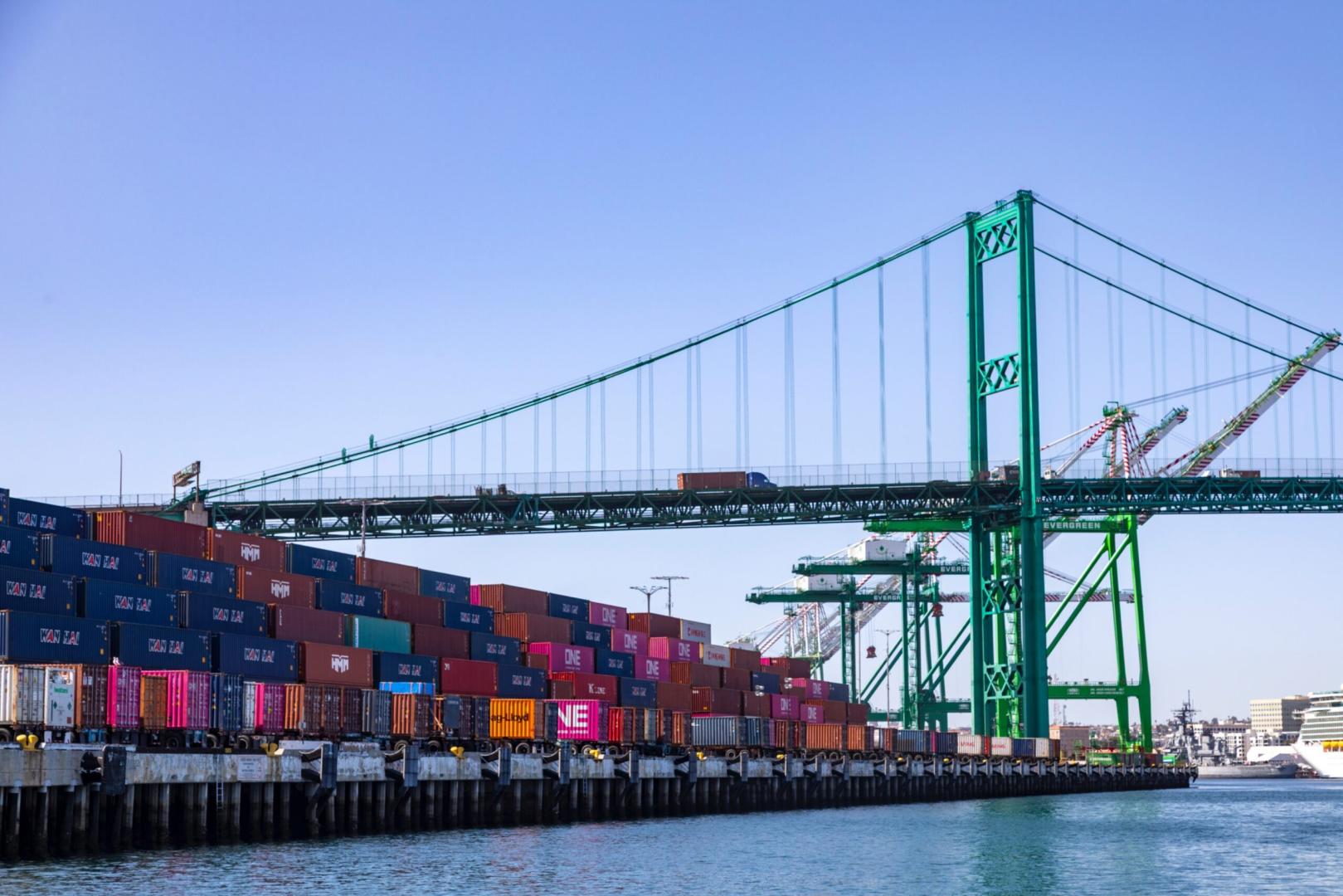
Import cargo volume at major U.S. container ports is expected to end 2025 down 5.6% from 2024 levels as newly implemented tariffs create significant pressure on international trade, according to the latest Global Port Tracker report released by the National Retail Federation and Hackett Associates.
The forecast comes as tariffs on dozens of countries worldwide have finally taken effect this week after months of announcements, postponements, negotiations, and deals.
“While this forecast is still preliminary, it shows the impact the tariffs and the administration’s trade policy are having on the supply chain,” said NRF Vice President for Supply Chain and Customs Policy Jonathan Gold. “Tariffs are beginning to drive up consumer prices, and fewer imports will eventually mean fewer goods on store shelves. Small businesses especially are grappling with the ability to stay in business.”
Gold added that binding trade agreements that lower tariffs rather than raise them are needed for a healthier economy, noting that “Tariffs are taxes paid by U.S. importers that will result in higher prices for U.S. consumers, less hiring, lower business investment and a slower economy.”
Hackett Associates Founder Ben Hackett described the current approach as “hither-and-thither” with “on-again, off-again tariffs” causing confusion and uncertainty throughout the supply chain. “Friends, allies and foes are all being hit by distortions in trade flows as importers try to second-guess tariff levels by pulling forward imports before the tariffs take effect,” Hackett said.
According to the report, U.S. ports covered by Global Port Tracker handled 1.96 million Twenty-Foot Equivalent Units (TEUs) in June, up 0.7% from May but down 8.4% year over year. July volumes are projected to have surged to 2.3 million TEUs as retailers rushed to bring in merchandise ahead of August’s tariffs.
The remainder of 2025 shows a concerning trend with forecast declines of 5% in August, 19.5% in September, 18.9% in October, 21.1% in November, and 19.3% in December compared to 2024 figures. November’s projected 1.71 million TEUs would represent the lowest monthly total since April 2023.
While the first half of 2025 totaled 12.53 million TEUs, up 3.6% year over year, the projected decline in the second half would bring the full year to 24.1 million TEUs, down 5.6% from 25.5 million TEUs in 2024.
A separate report from BIMCO confirms the disruptive pattern, noting that effective U.S. tariff rates fluctuated dramatically in early 2025, rising from 2.4% in January to a peak of 26.0% in April following what was termed the “Liberation Day” announcement, before moderating to 15.7% in June. Despite some new trade agreements, the average effective U.S. tariff rate as of August 1 is estimated at 17.6%, about two percentage points higher than June levels.
The report reveals that import volume rose 10.0% year-over-year in the first four months of 2025 but declined 6.2% during May and June as importers front-loaded cargoes in response to tariff changes. U.S. West Coast ports initially benefitted most from the early-year preloading rush with a 14.4% year-over-year increase in the first four months, but subsequently suffered a 9.2% decline in May and June.
BIMCO Chief Shipping Analyst Niels Rasmussen noted that average spot freight rates from Shanghai to the U.S. have dropped over 60% since early June, “indicating continued import weakness during the third quarter which could extend into the rest of the year.”
Analyst John McCown previously described falling imports as “a diametric contrast with the 15.2% overall annual growth for inbound loads seen in 2024,” adding that this will be “one of the more striking year to year changes in U.S. container volume in the six-decade history of container shipping.”
“As the first six months of 2025 are actually up 3.7%, an overall 2025 decline of 5.6% translates into volume being down 13.9% in the second half or balance of the year,” McCown said in a statement to gCaptain. “This is the sort of carnage that should be expected with these nonsensical tariffs and even blunter USTR ship fees that are an all out attack on trade itself. As we’ve been moving some $1.5 trillion per year of goods into the U.S. in containers, the big declines that are coming can’t help but ripple through the economy and reduce growth. And the boxes still coming in will bring with them hundreds of billions in annual inflation.”
Mike Schuler